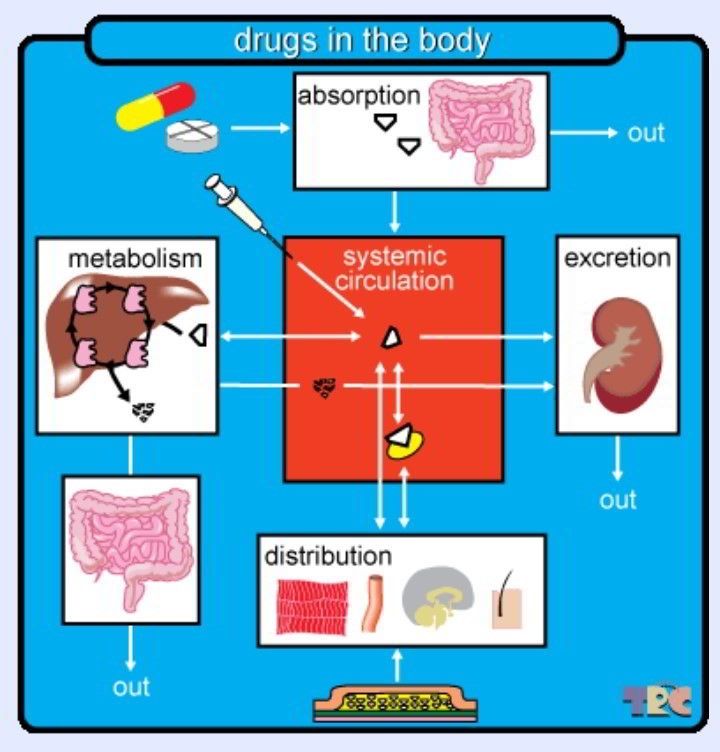Clinical pharmacology
Clinical pharmacology studies the drug-body interaction in humans. There are two important aspects: pharmacokinetics and pharmacodynamics. When we think of this interaction, we usually focus pharmacodynamics. In other words, we are more interested in how drugs affect our bodies. However, to completely understand it, we need to know what happens the other way around as well. The page Pharmacodynamics describes the way that drugs, including medicinal compounds, act on the body. Its subsections further explain how drugs interact with parts of the endocannabinoid system, leading to different effects. Several of these so-called mechanisms of actions are quite well known. For example, we know that the euphoric (side) effect is caused by the actions upon binding of the cannabis compound THC to the so-called CB1 receptor. Some mechanisms of action we haven’t grasped yet, while others we’re only starting to understand. In the coming sections, we’ve explained the things we know and don’t know yet, while also keeping you updated on the exciting developments in this field of science. The page Pharmacokinetics describes how the body acts on drug compounds. It consists of 4 stages: Absorption, Distribution, Metabolism and Elimination (ADME), and touches topics such as cannabinoid (cannabis compound) concentrations in the blood, the places in your body where cannabinoids like to go, how cannabinoids are broken down, and how they get out of your body (e.g. via urine). Watch a brief summary video on cannabis inhalation vs. cannabis ingestion made in collaboration with Enlighten on YouTube or on the screens page. Illustration: Pharmacokinetics covers the processes of how much drug is in the body. In order for a drug to work, it must reach therapeutic concentrations at the site of action. Unless a drug is directly injected into the systemic circulation, it will usually go through some absorption process. Once in the systemic circulation, the drug is distributed to the tissues, liver, or kidneys.
Illustration taken with permission from TRC Pharmacology Database.
_logo.svg)